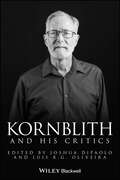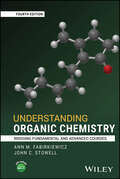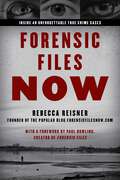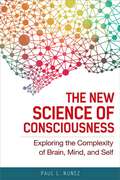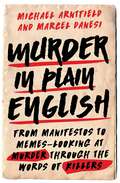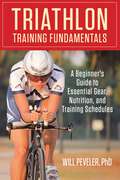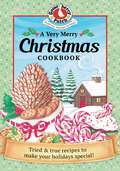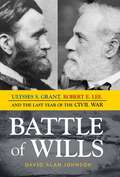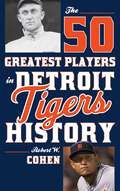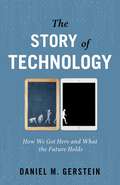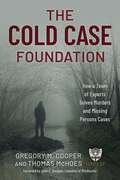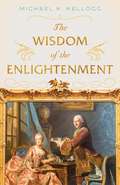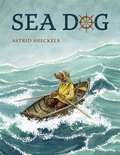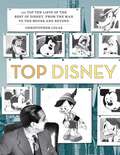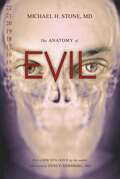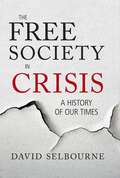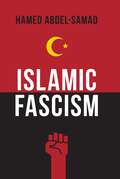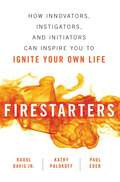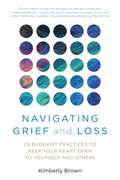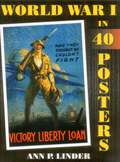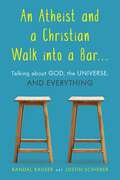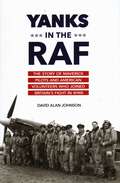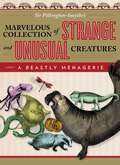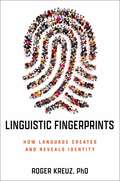- Table View
- List View
Kornblith and His Critics (Philosophers and their Critics)
by Joshua Dipaolo LUIS R.G. OLIVEIRAA wide-ranging engagement with one of contemporary epistemology's most influential thinkers Hilary Kornblith is one of the world's leading philosophers theorizing about knowledge and related issues. A key figure in the naturalized epistemology tradition, Kornblith integrates traditional empiricism with contemporary cognitive science, rejecting inward-looking, first-person approaches in favor of a third-person, scientifically grounded perspective on mind and knowledge. Kornblith's contributions have reshaped debates about the nature and structure of knowledge, justification, and epistemic normativity; he has challenged the legitimacy of conceptual analysis and the reliability of reflection and reasoning, besides charting and defending a mature and self-consciously naturalistic philosophical methodology. By exploring this terrain, Kornblith and His Critics offers an in-depth examination of some of the most unique and innovative work in the last 40 years of anglophone epistemology. This volume brings together fifteen original essays by leading philosophers engaging with Kornblith's work, each written specifically for this collection. Organized into three main thematic sections – Knowledge and Justification, Reflection and Inference, and Naturalism and Methodology – the collection systematically traces and tests the implications of Kornblith's work across key debates. The volume also includes a substantial reply from Kornblith, offering his own response to the critical challenges raised by the incisive contributions. Kornblith and His Critics is ideal for graduate and advanced undergraduate philosophy students, especially those taking a variety of courses on epistemology and philosophical methodology. Key features include: A complete and detailed overview of how Kornblith's work compares with, and contributes to, key debates in epistemology. Cutting-edge engagement with the foundations, nature, and future of naturalized epistemology. Thorough discussion of core issues in epistemology: from the nature of knowledge, justification, and inference to the epistemic value of reflection and conceptual analysis. A lengthy and unique reply by Hilary Kornblith, directly addressing the critical challenges raised by the incisive contributions. A systematic and thematic structure for easy integration into graduate and upper-level undergraduate courses. Kornblith and His Critics is a vital resource for researchers and instructors within philosophy programs in both MA and PhD curricula, as well as general readers interested in post-analytic and empirically-informed philosophy.
Understanding Organic Chemistry: Bridging Fundamental and Advanced Courses
by Ann M. Fabirkiewicz John C. StowellProvides a clear and cohesive path from fundamentals to advanced organic chemistry Understanding Organic Chemistry: Bridging Fundamental and Advanced Courses equips students with the conceptual tools and technical knowledge needed to transition confidently from lower-division coursework to upper-level study and research in organic chemistry. By integrating synthetic and physical organic chemistry, this popular textbook helps students understand reaction mechanisms, stereochemical principles, and synthetic strategies in a way that is both rigorous and accessible. The new fourth edition continues its dual focus on theoretical grounding and hands-on problem-solving, making it ideal for those who want to deepen their command of the subject and begin reading primary research literature with confidence. The text incorporates substantial updates throughout, including contemporary examples from synthetic chemistry, enhanced coverage of chiral catalysts and ene reactions, and newly developed in-text problem sets designed to promote self-guided learning. The chapters are structured around major themes—such as spectroscopy, reaction mechanisms, and functional group transformations—and include clear, concise explanations followed by extensive end-of-chapter exercises. Select problem answers are now available in the text, with full solutions and teaching materials accessible to instructors through a companion website. A balanced treatment of synthetic and physical organic chemistry that promotes a deeper conceptual understanding of the subject, Understanding Organic Chemistry: Introduces modern synthetic topics and recent advances in bond-forming methodologiesProvides up-to-date coverage of spectroscopy, functional group transformations, and synthesis designExplains stereochemistry and reaction mechanisms in a clear, structured manner ideal for advanced learnersEnables students to critically engage with primary research literature in organic chemistry With a student-friendly format that supports both coursework and self-directed study, Understanding Organic Chemistry: Bridging Fundamental and Advanced Courses, Fourth Edition, is ideal for junior- and senior-level undergraduates as well as first-year graduate students enrolled in intermediate or advanced organic chemistry courses. It is also a valuable reference for chemistry majors preparing for careers or further study in pharmaceuticals, materials science, or academic research.
Forensic Files Now: Inside 40 Unforgettable True Crime Cases
by Rebecca ReisnerPerhaps no other television show captures our innate fascination with crime and criminals better than the original Forensic Files. Including murders, insurance fraud, hit-and-runs, and kidnappings, all cases featured on the show are solved in large part with the help of forensic science like DNA evidence.In Forensic Files Now: Inside 40 Unforgettable Cases, author Rebecca Reisner shares her own gripping retellings — adapted from her popular blog, ForensicFilesNow.com — of 40 favorite cases profiled on the show along with fascinating updates and personal interviews with those directly involved. Featuring classic cases like the Tennessee brothers who terrorized locals for years until the feds rode into town, the Texas lovebirds who robbed a grave in an insurance fraud plot that made international headlines, the Ivy League-educated physician who attempted a fresh start by burying his wife in the basement, and some cases so captivating that they have sparked spinoff miniseries or documentaries of their own, this book will enthrall readers with its vivid recaps and detailed updates.Also featuring an in-depth interview with Forensic Files creator Paul Dowling and a profile on the show&’s beloved narrator, Peter Thomas, Forensic Files Now is a must-read for diehard Forensic Files fans and a welcome find for true crime readers looking for more riveting and well-told stories.
The New Science of Consciousness: Exploring the Complexity of Brain, Mind, and Self
by Paul L. NunezThis book explains in layperson's terms a new approach to studying consciousness based on a partnership between neuroscientists and complexity scientists. The author, a physicist turned neuroscientist, outlines essential features of this partnership. The new science goes well beyond traditional cognitive science and simple neural networks, which are often the focus in artificial intelligence research. It involves many fields including neuroscience, artificial intelligence, physics, cognitive science, and psychiatry. What causes autism, schizophrenia, and Alzheimer's disease? How does our unconscious influence our actions? As the author shows, these important questions can be viewed in a new light when neuroscientists and complexity scientists work together. This cross-disciplinary approach also offers fresh insights into the major unsolved challenge of our age: the origin of self-awareness. Do minds emerge from brains? Or is something more involved? Using human social networks as a metaphor, the author explains how brain behavior can be compared with the collective behavior of large-scale global systems. Emergent global systems that interact and form relationships with lower levels of organization and the surrounding environment provide useful models for complex brain functions.By blending lucid explanations with illuminating analogies, this book offers the general reader a window into the latest exciting developments in brain research.
Murder in Plain English: From Manifestos to Memes—Looking at Murder through the Words of Killers
by Marcel Danesi Michael ArntfieldThis is the first book to examine murder through the written word—not only the writings of the killers themselves, but also the story of murder as told in literary fiction and the crime dramas that are now a staple of film and television. The authors—a criminologist specializing in cold cases, written evidence, and forensic science, and an anthropologist who has dealt with the signs and ciphers of organized crime and street gangs in his previous work—are widely recognized experts in this emerging specialty field. Based on extensive research and interviews with convicted murderers, the book emphasizes the often-overlooked narrative impulse that drives killers, with the authors explaining how both mass and serial murderers perceive their crimes as stories and why a select few are compelled to commit these stories to writing whether before, during, or after their horrific acts.The book also analyzes the written work of killers, using a combination of machine-based linguistic patterning, predictive modeling, and symbolic interpretation, to make sense of the screeds of everyone from the Son of Sam and the Zodiac Killer to the Columbine attackers, the Unabomber, and the recent spate of mass shooters using social media as their preferred narrative platform. They present a theoretical perspective of murder that is based on both the criminological evidence and written works. In addition, the authors examine famous literature that has dealt ingeniously with murder and its relationship with real crime, from the Greek tragedians to Truman Capote to modern-day productions such as Making a Murderer.This unique approach offers a new means to penetrate the minds of murderers, revealing their motives as well as the wider social meanings of this age-old crime and our continuing fascination with it.
Triathlon Training Fundamentals: A Beginner's Guide to Essential Gear, Nutrition, and Training Schedules
by Will PevelerTriathlon Training Fundamentals caters directly to the beginner. Triathlon Training Fundamentals presents all of the basic information needed in plain language, from why and how to get started and what events to select, to what equipment to get and how to maintain it, to how to train for each leg of the race—swimming, biking, and running. Triathlon Training Fundamentals goes beyond laying out the basics to also tackle smaller—but equally as important—topics often overlooked in other books, like how to adjust training to fit your specific needs (such as if you have health issues, or are a youth or a woman) or how to troubleshoot equipment and health issues on race day.
A Very Merry Christmas Cookbook
by Gooseberry PatchFor a festive brunch, Country Club Eggs and Apricot-Almond Coffee Cake are sure to please. On snowy days, treat the kids to Gingerbread Pancakes and Christmas Cocoa. Warm 'em up at lunchtime with Lela's Beef & Vegetable Soup.Easy main dishes like Quick One-Pot Burrito Bowl and Sour Cream Spaghetti will help you get dinner on the table in a jiffy. Create new holiday traditions with Baked Ham with Citrus-Mustard Dressing or Mom's Barbecue Brisket. Nina's Corn Pudding, Zucchini Pecan Bread and Carrot Apple Slaw will make it a meal they'll always remember.Easy Pulled Pork for a Crowd and Aloha Chicken Wings are perfect for party time. Welcome the new year with Roasted Red Pepper Spread, Pauline's Spiced Peanuts and &“Champagne&” Punch...cheers! Of course, we couldn't forget Christmas sweets. Fill your cookie trays with Cherry Twinkles, Elf Thumbprints and Grandma's Jelly Cookies...delight everyone at dessert time with Red Velvet Poke Cake.You'll find easy-to-follow directions using familiar ingredients, plus sweet holiday memories and clever tips for creating your own sweet memories.
Battle of Wills: Ulysses S. Grant, Robert E. Lee, and the Last Year of the Civil War
by David Alan JohnsonHistorians have long analyzed the battles and the military strategies that brought the American Civil War to an end. Going beyond tactics and troop maneuvers, this book concentrates on the characters of the two opposing generals--Robert E. Lee and Ulysses S. Grant--showing how their different temperaments ultimately determined the course of the war. As author David Alan Johnson explains, Grant's dogged and fearless determination eventually gained the upper hand over Lee's arguably superior military brilliance. Delving into their separate upbringings, the book depicts Grant as a working-class man from Ohio and Lee as a Virginia aristocrat. Both men were strongly influenced by their fathers. Grant learned a lesson in determination as he watched his father overcome economic hardships to make a successful living as a tanner and leather goods dealer. By contrast, Lee did his best to become the polar opposite of his father, a man whose bankruptcy and imprisonment for unpaid debts brought disgrace upon the family. Lee cultivated a manner of unimpeachable respectability and patrician courtesy, which in the field of battle did not always translate into decisive orders. Underscoring the tragedy of this fratricidal conflict, the author recounts episodes from the earlier Mexican war (1846-1848), when Grant and Lee and many other officers who would later oppose each other were comrades in arms. This vivid narrative brings to life a crucial turning point in American history, showing how character and circumstances combined to have a decisive influence on the course of events.
The 50 Greatest Players in Detroit Tigers History (50 Greatest Players)
by Robert W. CohenThis book carefully examines the careers of the fifty men who made the greatest impact on one of the most successful franchises in the history of professional sports. Features of The 50 Greatest Players in Detroit Tigers History include quotes from opposing players and former teammates, summaries of each player&’s best season, recaps of their most memorable performances, and listings of their notable achievements.
Story of Technology: How We Got Here and What the Future Holds
by Daniel M. GersteinA leading technology expert examines ways to manage the rapid proliferation of technology and come to grips with its pervasive influence. Technology--always a key driver of historical change--is transforming society as never before and at a far more rapid pace. This book takes the reader on a journey into what the author identifies as the central organizing construct for the future of civilization, the continued proliferation of technology. And he challenges us to consider how to think about technology to ensure that we humans, and not the products of our invention, remain in control of our destinies? In this informative and insightful examination, Dr. Daniel M. Gerstein--who brings vast operational, research, and academic experience to the subject--proposes a method for gaining a better understanding of how technology is likely to evolve in the future. He identifies the attributes that a future successful technology should seek to emulate and the pitfalls that a technology developer should try to avoid. The aim is to bring greater clarity to the impact of technology on individuals and society. In particular, he considers three technologies now converging that will shape the future: biotechnology, artificial intelligence, and the "internet of things." He asks: Will we continue to develop new technologies in these fields merely because basic research shows that we can, or should we first consider the likely effects of these technologies on the quality of life at the individual, societal, and global levels? Dr. Gerstein makes a compelling case that rational and informed evolution of our technological options is the best course for ensuring a brighter future.
Cold Case Foundation: How a Team of Experts Solves Murders and Missing Persons Cases
by Gregory M. Cooper Thomas McHoesFollow the most riveting cases of an elite investigative team of volunteers brought together by a famed FBI Profiler dedicated to solving crimes no one else couldWhen Gregory M. Cooper, former head of the FBI&’s Behavioral Sciences Unit, founded the Cold Case Foundation in 2013, he had high expectations, but couldn&’t anticipate the level of response. What started with just a half-dozen or so retired FBI agents and homicide detectives has ballooned to more than 150 women and men who volunteer their time to help families of deceased or missing loved ones bring closure to cases that have gone &“cold.&”The Cold Case Foundation shares the most riveting and rewarding cases the Foundation has helped solve, from high-profile missing persons cases to decades-old murders. In a fairly short time, the Cold Case Foundation has contributed to the solving of dozens of cases and is helping hundreds more homicide and missing persons investigations move forward. Police departments and victims&’ families from throughout the country have been supported by the Foundation&’s services, which are more than welcome for investigators that are increasingly finding themselves with fewer resources—and not enough time—to dedicate to the most difficult cases.The Cold Case Foundation covers not only the investigative approaches the Foundation&’s investigators employ and recommend, but also the principles and activities that help communities and law enforcement agencies come together in a spirit of cooperation and trust to help solve cases that, for whatever reason, have gone unsolved—until now.
The Wisdom of the Enlightenment
by Michael K. KelloggEnlightenment—Aufklärung in German, Lumières in French—is more an idea than a period. But it is an idea that took hold in a particular historical context of revolutionary scientific advances, increasing economic and social freedom, rising literacy and prosperity, and a greater willingness to challenge the authoritarianism of the seventeenth and eighteenth centuries. In The Wisdom of the Enlightenment, author Michael K. Kellogg points to 1637, the year that gave us Rene Descartes&’ landmark inquiry into truth, as the beginning of a period that radically changed individual human thought and collective societal action. From Descartes&’ assertion of &“I think, therefore I am,&” to the philosophies of Enlightenment thinkers like Moliere, Spinoza, Voltaire, Hume, and Kant, this book charts the new and revolutionary philosophies at a time when progress seemed possible across the whole range of human knowledge and endeavor. In sweeping aside tired superstitions and applying a new scientific methodology, the Enlightenment ideas of progress through free exercise of reason ushered us into the modern world. This engaging and comprehensive survey of Enlightenment thoughts and thinkers is a celebration of the faith that all problems are solvable by human reason. ,
Sea Dog
by Astrid SheckelsWalter longs to be a sea dog. He comes from a long line of seafaring dogs, all of whom made their livelihoods from the sea, but, alas, Walter's talent seems to extend only to baking. He sells his breads and cakes, made from his aunt&’s classic sea dog recipes, in the village tea shop. But, when an unfortunate incident plunges Walter into a deep-sea adventure, he is brought face to face with the legendary Big Boris and discovers his place as a true sea dog.
Top Disney: 100 Top Ten Lists of the Best of Disney, from the Man to the Mouse and Beyond
by Christopher LucasThere is not a person on Earth who hasn&’t come into contact with Disney in some way. Whetherseeing a Disney film, hearing a Disney song, recognizing a Disney character or visiting a Disneypark, the company&’s reach is global. Top Disney will collect the best of the best of Disney in a book of lists.From Walt himself and the beginning of his company, to his successors who have broadenedthe reach of the Disney brand well beyond where even Walt could have imagined it, this bookwill cover every aspect of the 93 years of history that Disney has to offer. In it you will findinformation on everything from Oswald the Lucky Rabbit and Queen Elsa, to the billion dollaracquisitions of Marvel and Lucasfilm.
Anatomy of Evil
by Michael H. Stone M.D.FROM NARCISSISM TO AGGRESSION, AN ORIGINAL LOOK AT THE PERSONALITY TRAITS AND BEHAVIORS THAT CONSTITUTE EVILIn this groundbreaking book, renowned psychiatrist Michael H. Stone explores the concept and reality of evil from a new perspective. In an in-depth discussion of the personality traits and behaviors that constitute evil across a wide spectrum, Dr. Stone takes a clarifying scientific approach to a topic that for centuries has been inadequately explained by religious doctrines. Stone has created a 22-level hierarchy of evil behavior, which loosely reflects the structure of Dante's Inferno. Basing his analysis on the detailed biographies of more than 600 violent criminals, hetraces two salient personality traits that run the gamut from those who commit crimes of passion to perpetrators of sadistic torture and murder. One trait is narcissism, as exhibited in people who are so self-centered that they have little or no ability to care about their victims. The other is aggression, the use of power over another person to inflict humiliation, suffering, and death.What do psychology, psychiatry, and neuroscience tell us about the minds of those whose actions could be described as evil? And what will that mean for the rest of us? Stone discusses how an increased understanding of the causes of evil will affect the justice system. He predicts a day when certain persons can safely be declared salvageable and restored to society and when early signs of violence in children may be corrected before potentially dangerous patterns become entrenched.
Free Society in Crisis: A History of Our Times
by David SelbourneDescribed in a pre-publication review in the New York Times as "ambitious" and "exactly right to conclude that we need a practical renewal of the politics and ethics of the civic commonwealth," noted historian of ideas and political theorist David Selbourne takes his distance in The Free Society in Crisis from the routine thinking of right and left. Instead, he argues that free societies are under simultaneous threat from "market free choice" and "moral free choice", and sees them as two sides of the same coin. Market free choice gives free rein to market forces even when they create dangerous tensions between the haves and have-nots, and ride roughshod over communities and whole nations, while moral free choice privileges individual rights without any sense of civic responsibility and social consequence. The result of such individualism in economic and moral practice, whose history in recent decades Selbourne traces, is the malaise we find ourselves in today: a lost sense of place, identity and personal direction, as well as dismissiveness and ignorance of the lessons of the past.For today's liberty is not the freedom fought for in the French and American revolutions; it is instead the liberty of consumers and free-choosers. Reminding the reader of the aspirations and largely-forgotten writings of America's Founding Fathers, Selbourne shows how its first settlers' idea of a "true commonwealth" rested on "affections truly bent upon the common good". Today, as the democratic social order dissolves, and disapproval of the political class increases, he makes clear that liberty alone, however "progressive" it may be held to be, will not restore it, while there can be no "true commonwealth" where citizenship is seen as little more than a means of access to material benefits rather than a place of belonging. Moreover, if a civil society is to cohere, we must be citizens before we are Christians, Muslims, or Jews.
Islamic Fascism
by Hamed Abdel-SamadThis polemic against Islamic extremism highlights the striking parallels between contemporary Islamism and the 20th-century fascism embodied by Hitler and Mussolini. Like those infamous ideologies, Islamism today touts imperialist dreams of world domination, belief in its inherent superiority, contempt for the rest of humanity, and often a murderous agenda. The author, born and raised in Egypt and now living in Germany, not only explains the historical connections between early 20th-century fascist movements in Europe and extremist factions in Islam, but he also traces the fascist tendencies in mainstream Islam that have existed throughout its history. Examining key individuals and episodes from centuries past, the book shows the influence of Islam's earliest exploits on current politics in the Islamic world. The author's incisive analysis exposes the fascist underpinnings of the Muslim Brotherhood, Hamas, Hezbollah, the Shia regime in Iran, ISIS, Salafi and Jihadist ideologies, and more. Forcefully argued and well-researched, this book grew out of a lecture on Islamic fascism that the author gave in Cairo, resulting in a call for his death by three prominent Egyptian clerics.
Firestarters: How Innovators, Instigators, and Initiators Can Inspire You to Ignite Your Own Life
by Kathy Palokoff Paul Eder Raoul DavisBased on interviews with entrepreneurs and leaders in many walks of life, this self-help book gives readers the tools for finding success in their careers, businesses, organizations, and private lives. What is the difference between those bold enough to pursue their dreams and others who never get comfortable enough to ignite their lives? The doers are "Firestarters" and, because of them, the world is a much different, and often, better place. This motivational how-to book provides insights into the crucial difference between people who make things happen and those who only think about making an impact. Based on research from many disciplines and interviews with professionals at the top of their fields, Firestarters creates a complete roadmap to achieve personal success and make an impact in the world. The heart of the book features stories about successful entrepreneurs, CEOs, organizational leaders, and forward-looking thinkers from a variety of professions. They describe the factors and conditions that ignited their lives and helped them become achievers. Some are known to the public; others will be completely new. But all the stories demonstrate how they became—and you can become—a Firestarter. The authors provide pragmatic advice on how individual readers can ignite the qualities that will lead them toward pursuing and realizing their dreams. Self-assessment exercises, checklists, and other tools will help readers apply Firestarter insights to their own lives. Also included are group exercises and discussion guides so the book can be used in business and nonprofit settings to develop the skills that help companies grow. Whether you're an individual seeking ways to realize personal ambitions or a leader trying to motivate your team, you'll benefit from the Firestarter methods featured in this inspirational book.
Navigating Grief and Loss: 25 Buddhist Practices to Keep Your Heart Open to Yourself and Others
by Kimberly BrownNAVIGATING GRIEF AND LOSS is designed to support all of us through difficult and upsetting times. It&’s a relatable and useful guide with practical applications to help navigate the profound experience of loss, be it an elderly parent, succumbing to a lingering illness, the shock of an accidental death, a small business shuttered, a divorce after years of conflict, or euthanasia of a beloved pet. Each short chapter honestly describes a personal experience dealing with death or grief—staying at a hospice facility at my mother&’s bedside, feeling frustrated by the options for a terminally ill friend, navigating changed relationships after someone dies, the shock and shame of an unwanted divorce, managing the overwhelming pain of bereavement—and is followed by a brief practice—a meditation, exercise, or contemplation that readers can use to discover insights and truths and find some solace for their own struggles and sorrow.
World War I in 40 Posters
by Ann P. LinderPublished during the war's centennial, this is the story of the First World War through forty propaganda posters. Essays explain each poster, unpacking the visual imagery and setting the poster within the military, political, social, and cultural history of the war.
Atheist and a Christian Walk into a Bar: Talking about God, the Universe, and Everything
by Justin Schieber Randal RauserThe question of God is simply too important--and too interesting--to leave to angry polemicists. That is the premise of this friendly, straightforward, and rigorous dialogue between Christian theologian Randal Rauser and atheist Justin Schieber. Setting aside the formality of the traditional debate, the authors invite the reader to join them in an extended, informal conversation. This has the advantage of easing readers into thorny topics that in a debate setting can easily become confusing or difficult to follow. Like any good conversation, this one involves provocative arguments, amusing anecdotes, and some lively banter. Rauser and Schieber begin with the question of why debates about God still matter. They then delve into a number of important topics: the place of reason and faith, the radically different concepts of God in various cultures, morality and its traditional connection with religious beliefs, the problem of a universe that is overwhelmingly hostile to life as we know it, mathematical truths and what they may or may not say about the existence of God, the challenge of suffering and evil to belief in God, and more. Refreshingly upbeat and amicable throughout, this stimulating conversation between two friends from opposing points of view is an ideal introduction to a perennial topic of debate.
Cowboys, Creatures, and Classics: The Story of Republic Pictures
by Chris Enss Howard KazanjianTake one well-oiled effective killing machine, add a familiar hero on the ground, in the air, and on horseback; stir in a ghastly end that&’s surely impossible to escape, add action, add passion, made on a shoestring budget at breakneck speed, and you&’ve got the recipe for Republic Pictures. Who, after all, cannot forget The Atomic Kid, starring Mickey Rooney, or The Untamed Heiress, with an un-Oscar-worthy performance by ingénue Judy Canova? Exploding onto the movie scene in 1935, Republic Pictures brought the pop culture of the 30s and 40s to neighborhood movie houses. Week after week kids sank into their matinee seats to soak up the Golden Age of the Republic series, to ride off into the classic American West. And they gave us visions of the future. Visions that inspire film makers today. Republic was a studio that dollar for dollar packed more movie onto the screen than the majors could believe. From sunrise on into the night over grueling six day weeks, no matter how much mayhem movie makers were called upon to produce, at Republic Pictures it was all in a day&’s work. Republic Pictures was the little studio in the San Fernando Valley where movies were made family style. A core of technicians, directors, and actors worked hard at their craft as Republic released a staggering total of more than a thousand films through the late 1950s. Republic Pictures was home to John Wayne for thirty-three films. Always inventing, Republic brought a song to the West. It featured the West&’s first singing cowboy. Republic brought action, adventure, and escape to neighborhood movies houses across America. And they brought it with style. Scene from westerns such as The Three Mesquiteers and the Lawless Range gave screaming kids at the bijou a white-knuckle display of expert film making. Republic Pictures became a studio where major directors could bring their personal vision to the screen. Sometimes these were projects no other studio would touch such as The Quiet Man (which brought director John Ford an Oscar) and Macbeth. Killer Bs, Cowboys, Creatures and Classics: The Story of Republic Pictures is for anyone who likes B movies magic. It is the honest account of an extraordinary production house, one whose ability to turn out films quickly boded well for its transition into television production. Not only were its sets used for such shows as Leave it to Beaver and Gilligan&’s Island, stock footage from Republic&’s movies was used on such shows as Gunsmoke and The Life and Legend of Wyatt Earp.
Yanks in the RAF: The Story of Maverick Pilots and American Volunteers Who Joined Britain's Fight in WWII
by David Alan JohnsonThis is the story of American volunteer pilots who risked their lives in defense of Britain during the earliest days of World War II-more than a year before Pearl Harbor, whenthe United States first became embroiled in the global conflict. Based on interviews, diaries, personal documents, and research in British, American, and German archives, the author has created a colorful portrait of this small group who were our nation's first combatants in World War II. As the author's research shows, their motives were various: some were idealistic; others were simply restless and looking for adventure. And though the British air force needed pilots, cultural conflicts between the raw American recruits and their reserved British commanders soon became evident. Prejudices on both sides and lack of communication had to be overcome. Eventually, the American pilots were assembled into three squadrons known as the Eagle squadrons. They saw action and suffered casualties in both England and France, notably in the attack on Dieppe. By September 1942, after America had entered the war, these now experienced pilots were transferred to the US air force, bringing their expertise and their British Spitfires with them. As much social as military history, Yanks in the RAF sheds new light on a little-known chapter of World War II and the earliest days of the sometimes fractious British-American alliance.
Beastly Menagerie: Sir Pilkington-Smythe's Marvelous Collection Of Strange And Unusual Creatures
by Sir Pilkington-SmytheA modern-day bestiary of the most incredible animals the world has ever seen—with 200 full-color illustrationsOur planet is a writhing mass of wondrous life, positively popping at the seams with peculiar creatures. Life has wriggled its way into every conceivable nook and cranny, and nature has belched out organisms into even the most inhospitable environments.A Beastly Menagerie is a compendium of 100 of these most curious of creatures, from beasts that can fit on a pinhead and survive a saunter into space, to sea creatures just waiting for an excuse to smash a ship to smithereens. And let's not forget to mention the remarkable Jesus Christ lizard, the bone-eating snot flower, the pink fairy armadillo, and the zombie fly.This beautifully illustrated collection will delight and bedazzle fans of the amazing animal kingdom in equal measure. Narrated by the affable eccentric Sir Pilkington-Smythe and assisted by his cronies at The Proceedings of the Ever So Strange, each entry is an enlightening and marvelous foray into our world and all its wonders . . . topped off with a soupçon of silliness.An excerptSharks are pretty pleased with themselves, and so they should be. You see, they are basically rippling slabs of muscle in gunmetal grey, with row upon row of huge razor-sharp teeth—awesome eating machines that have remained unchanged for millennia. . . . Of course, some sharks don't look so tough. Think of the bizarre hammerhead, goblin, and frilled sharks. Not that they're to be trifled with. And then there's the cookie cutter shark, a sniveling little guttersnipe who looks more like a fat lady's arm holding a kitchen utensil than the pinnacle of predatory evolution.
Linguistic Fingerprints: How Language Creates and Reveals Identity
by Roger KreuzHow much of ourselves do we disclose when we speak or write? A person&’s accent may reveal, for example, whether they hail from Australia, or Ireland, or Mississippi. But it&’s not just where we were born—we divulge all sorts of information about ourselves and our identity through language. Level of education, gender, age, and even aspects of our personality can all be reliably determined by our vocabulary and grammar. To those who know what to look for, we give ourselves away every time we open our mouths or tap on a keyboard.But how unique is a person&’s linguistic identity? Can language be used to identify a specific person? To identify—or to exonerate—a murder suspect? To determine who authored a particular book? The answer to all these questions is yes. Forensic and computational linguists have developed methods that allow linguistic fingerprinting to be used in law enforcement. Similar techniques are used by literary scholars to identify the authors of anonymous or contested works of literature. Many people have heard that linguistic analysis helped to catch the Unabomber, or to unmask an anonymous editorialist—but how is it done? LINGUSISTIC FINGERPRINTS will explain how these methods were developed and how they are used to solve forensic and literary mysteries. But these techniques aren&’t perfect, and the book will also include some cautionary tales about mistaken linguistic identity.
